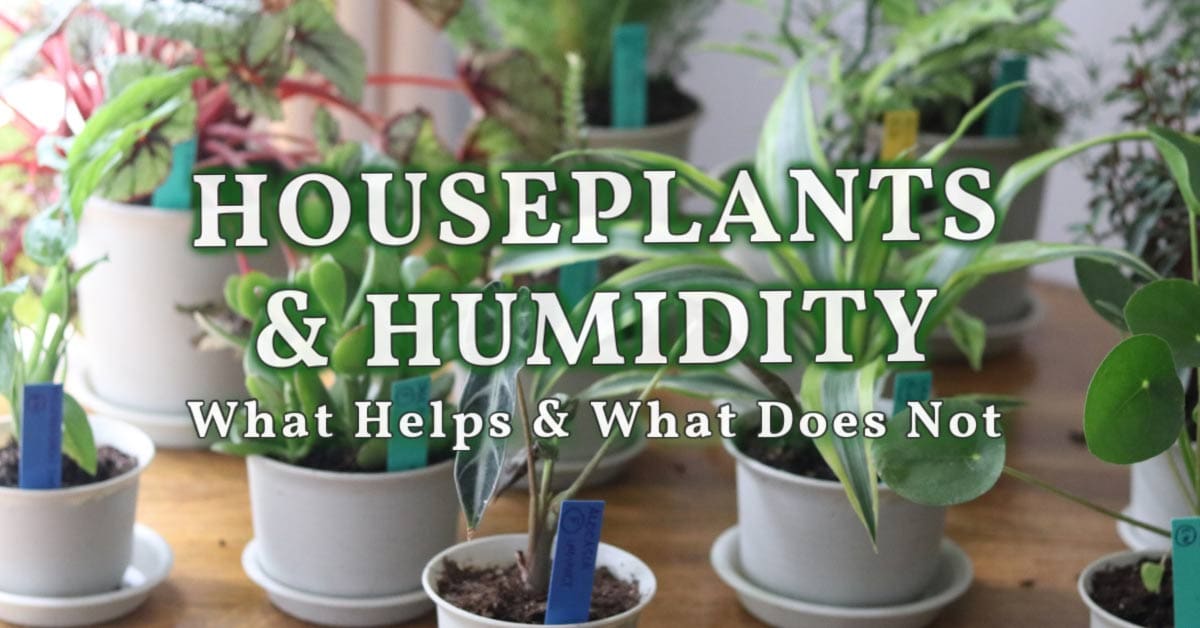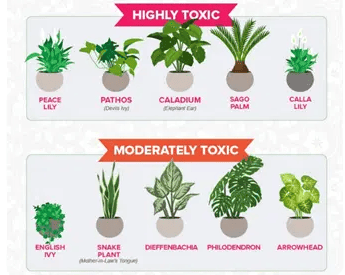
Houseplants bring life and beauty to our homes, but have you ever wondered if they can adapt to different humidity levels? Well, you’re in the right place! Today, we’re going to explore the fascinating world of houseplants and their ability to thrive in varying humidity conditions.
You see, houseplants are incredible survivors. They can adapt to different environments, just like we humans do. Whether it’s a dry climate or a humid one, these green wonders have some tricks up their leaves to cope with changing conditions.
So, if you’re ready to discover the secrets of how houseplants handle different humidity levels and continue to flourish in your home, let’s dive right in! Get ready to explore the wonderful world of houseplants and their amazing adaptability.
Can Houseplants Adapt to Different Humidity Levels?
Houseplants are surprisingly adaptable to different humidity levels. While certain plants thrive in humid conditions, others prefer drier environments. To ensure your plants adapt successfully, follow these tips:
- Research optimal humidity levels for your specific houseplants.
- Monitor humidity levels using a hygrometer.
- Adjust humidity by using a humidifier or dehumidifier.
- Mist your plants to increase humidity.
- Group plants with similar humidity needs together.
By following these steps, your houseplants can thrive in any humidity level!
Science behind Houseplants and Humidity
Houseplants, like all plants, have evolved to adapt to their specific environmental conditions. They have developed various mechanisms to cope with changes in humidity levels. One such mechanism is known as transpiration, where plants release moisture from their leaves into the surrounding air.
This process helps regulate their internal water balance and allows them to respond to changes in humidity. Additionally, plants have specialized structures called stomata, tiny openings on the surface of leaves, which they can open or close to control the exchange of gases and water vapor with the environment.
These adaptations enable houseplants to survive and thrive in a wide range of humidity levels.
Furthermore, the ability of houseplants to adapt to different humidity levels is influenced by their natural habitat. Plants native to humid rainforests, such as ferns and orchids, naturally thrive in high-humidity environments.
On the other hand, cacti and succulents, which originate from arid regions, have developed the ability to store water and tolerate drier conditions. This shows that different types of houseplants have varying degrees of adaptability to different humidity levels.
Role of Humidity in Plant Health
Humidity plays a crucial role in plant health and growth. Adequate humidity levels are essential for the proper functioning of a plant’s physiological processes. When the air is too dry, plants can experience water stress, which can lead to wilting and leaf damage. Dry air can also increase the risk of pest infestations and reduce the overall vigor of the plant.
On the other hand, excessively high humidity can create a favorable environment for fungal diseases and hinder the plant’s ability to take up water through its roots. Maintaining an optimal humidity level in your home or indoor garden is key to ensuring the health and vitality of your houseplants.
Here are some ways you can help your houseplants adapt to changing humidity levels:
- Use a humidifier: If you live in an area with consistently low humidity, investing in a humidifier can be beneficial for your houseplants. A humidifier adds moisture to the air, creating a more favorable environment for your plants.
- Mist your plants: Regularly misting your houseplants with water can help increase the humidity levels around them. This is especially useful for plants that prefer higher humidity, such as tropical ferns and orchids.
- Create a pebble tray: Placing your potted plants on a tray filled with water and pebbles can create a microclimate of higher humidity around the plants. As the water evaporates, it increases the moisture levels in the surrounding air.
- Group plants together: Grouping your houseplants together can create a naturally humid microclimate. As plants release moisture through transpiration, it increases the humidity around them.
Can Houseplants Survive in Dry Environments?
Despite their ability to adapt to varying humidity levels, there are limits to what houseplants can tolerate. Some houseplants, particularly those native to tropical rainforests, may struggle to thrive in very dry environments.
In such cases, it becomes essential to provide additional measures to increase humidity levels for these plants. These can include using a humidifier, regularly misting the plants, or creating a humidity tray as mentioned earlier.
Benefits of Houseplants in Different Humidity Levels
Houseplants offer numerous benefits regardless of the humidity levels. They not only enhance the aesthetic appeal of your home but also improve air quality by reducing levels of pollutants and toxins.
Additionally, they can increase humidity levels in dry environments, providing a more comfortable and healthier indoor environment. Houseplants also have the ability to lift moods, reduce stress, and improve overall well-being. Whether you live in a humid or dry climate, adding a variety of houseplants to your space can bring beauty and benefits to your life.
Best Houseplants for Different Humidity Levels
There is a wide array of houseplants available that can thrive in different humidity levels. Here are some examples:
- Pothos (Epipremnum aureum): This popular houseplant is adaptable and can tolerate a wide range of humidity levels, making it suitable for different environments.
- Spider Plant (Chlorophytum comosum): Spider plants are known for their air-purifying qualities and can thrive in average humidity levels.
- Peace Lily (Spathiphyllum): This tropical plant prefers higher humidity levels and can add a touch of elegance to any space.
- Succulents (Various species): Succulents are renowned for their ability to tolerate dry conditions and are perfect for low-humidity environments.
Houseplants have a remarkable ability to adapt to different humidity levels. Their natural mechanisms, such as transpiration and stomata, enable them to regulate water balance and respond to changes in their environment.
However, it’s important to understand the specific needs of your houseplants and provide appropriate measures to maintain optimal humidity levels.
By understanding the science behind plant adaptation and implementing simple strategies, you can create a thriving environment for your houseplants, regardless of the humidity levels in your area. So go ahead, explore the world of houseplants, and bring the beauty and benefits of greenery into your home!
Frequently Asked Questions
Houseplants are versatile and resilient, but can they adapt to different humidity levels? Find out more below.
1. How do houseplants adapt to low humidity levels?
Houseplants have various mechanisms to adapt to low humidity levels. Firstly, they can reduce their transpiration rate by closing their stomata (small openings on leaves) to minimize water loss. Additionally, some houseplants have specialized structures like succulent leaves or hairy surfaces that help retain moisture.
These adaptations allow them to thrive in drier conditions by conserving water.
Furthermore, houseplants with a higher tolerance for low humidity levels are often native to arid regions, meaning they have naturally evolved to survive in such environments. These plants have special adaptations that enable them to store and efficiently utilize water, making them well-suited for dry indoor climates.
2. Can houseplants adapt to high humidity levels?
Yes, houseplants can adapt to high humidity levels. Many houseplants originate from tropical rainforest environments characterized by high humidity. They have developed specific adaptations to thrive in these conditions.
For instance, they often have large, thin leaves that facilitate efficient gas exchange with the surrounding air. This helps regulate moisture levels within the plant and prevents damage from excess humidity.
Moreover, houseplants can also adapt to high humidity levels by transpiring more water. This process, called transpiration, helps plants regulate their internal temperature and maintain proper water balance. The increased transpiration rate in high humidity levels allows the plant to cool down and release excess moisture, preventing diseases caused by fungal or bacterial growth.
3. Can houseplants adapt to both low and high humidity levels?
Yes, many houseplants have a remarkable ability to adapt to both low and high humidity levels. Some plants have a wide range of tolerance and can thrive in diverse conditions.
These adaptable houseplants possess flexible physiological and morphological characteristics that enable them to adjust to varying levels of humidity.
Plants with waxy or glossy leaves, for example, are better equipped to handle both low and high humidity levels. The waxy cuticle on their leaves limits moisture loss in dry conditions, and the glossiness helps water roll off the surface in humid conditions.
Additionally, certain plant species can adjust their stomata opening size to regulate the amount of moisture loss, further aiding their ability to adapt to changing humidity levels.
4. Is there a limit to how much humidity houseplants can adapt to?
While houseplants can adapt to a range of humidity levels, there is a limit to how much they can tolerate. Some houseplants may suffer if the humidity is too extreme, whether extremely low or high. Extremely low humidity can lead to excessive water loss from the plant, resulting in wilting, yellowing leaves, and stunted growth.
On the other hand, excessively high humidity can create a breeding ground for fungal diseases and hinder proper gas exchange.
Therefore, it is important to choose houseplants that are suitable for the specific humidity levels in your home. This will ensure optimal growth and overall health of the plants. Additionally, using a humidifier or dehumidifier can help create a more favorable environment for houseplants, allowing them to thrive within a wider range of humidity levels.
5. Can I help my houseplants adapt to different humidity levels?
Yes, you can help your houseplants adapt to different humidity levels. If the humidity is too low, you can increase it by placing a tray of water near the plants or using a humidifier. Grouping plants together can also create a microclimate that helps maintain higher humidity levels. Additionally, misting the leaves of certain houseplants can provide a temporary increase in humidity around the plant.
On the other hand, if the humidity is too high, you can improve air circulation around the plants by using fans or opening windows. This helps reduce stagnant air and encourages evaporation, lowering the overall humidity. It is essential to monitor the humidity levels regularly and make adjustments as needed to provide the best conditions for your houseplants.
Houseplants can adapt to different humidity levels by adjusting the size and number of their stomata. Stomata are tiny openings on the surface of leaves that allow plants to exchange gases with the environment.
When humidity is high, plants have more open stomata to release excess water through transpiration. On the other hand, in low humidity, plants reduce the number of open stomata to minimize water loss. This adaptation helps them survive in diverse environments.
Additionally, houseplants can also benefit from external measures to maintain proper humidity levels. Placing them in groups can create a microclimate with higher humidity, as the plants release moisture through transpiration.
Misting the leaves or using a humidifier can also provide the necessary humidity for certain plant species. Understanding and providing appropriate humidity levels can help ensure the health and well-being of houseplants.


